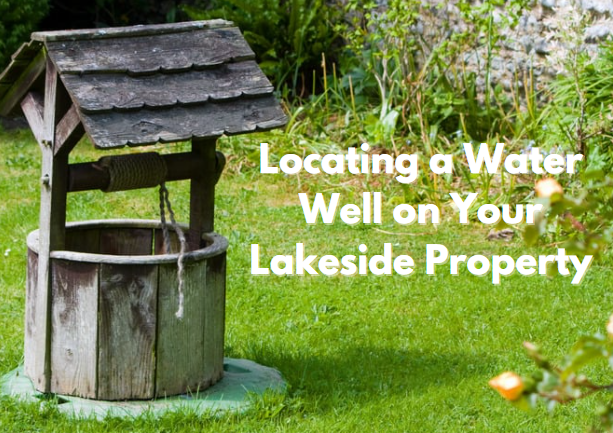
Some lakefront home owners are not actually home owners quite yet. They own an amazing lakeside property that is just land. The vision for a grand lakeside paradise is there, just not the home part! One of the first steps in the building process is to determine the placement of the well. Locating a water well on your lakeside property is not typically a property owners job, but if you want to be an asset in the building process it is important to be “well” informed.
Well placement is important in determining water quality and how much potential water can be produced. Here are some key tips to think about in determining a spot to place your well.

Keep your well away from sources of contamination
An obvious tip, however, contamination can be in many forms. Septic tanks and leech fields are usually the first thought. Knowing where your septic tank is going to be located is key, but also knowing where your neighbors septic equally important.
Barnyards, animal enclosures, surface water sources like swamps, and fuel tanks can also hurt the quality of well water.
Check the lay of the land
The topography and soil type of your property influences where you should situate your new well. The best well site is in an elevated area .Are there signs of large rocks and other hazards than can impede a spot to properly drill a well? These can be natural or man made.
Know your ground water
The groundwater beneath your property is important because it is your well water source. That water may rest in an underground reservoir or within layers of porous sediment like sand, silt, and gravel. Sometimes groundwater is only a few feet beneath the surface, or it can be a hundred feet deeper. Just like understanding your neighbors septic location, their well location is important also.
Know your state and local regulations
If you are building a lake home that requires water well, it’s a good idea to become familiar with state regulations. Building a home near a lake, pond or wetland area comes with its own set of rules and regulations. Distance to the flood plain or wetland and proximity to the high water mark are just a few items that can make or break the location of a well on a lakeside property.

If you’re a lakefront property owner with a vision for a grand lakeside paradise but don’t yet have a home, locating a water well on your property is an important step in the building process. While it’s not typically the property owner’s responsibility, being well-informed can make you an asset to the process. Once you’ve determined the well location, you can move forward with building your dream lake home. Remember to stay up-to-date on local rules and regulations, and to follow common guidelines used by professionals to ensure the success of your project. With the right information and planning, you can turn your lakeside property into the perfect retreat.
“Posted by Scott Freerksen – The Lake Guy”
